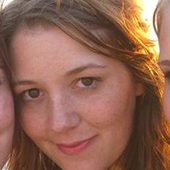Experience
While having a good education is a great starting point, you won’t get very far without having some experience behind you. The best place to start is by looking for entry-level jobs in UX design or related fields such as graphic design or Web design. However, if you have no formal training, getting your first job in user experience can be particularly difficult. You may have to start out in other positions at an agency or product development company, then gradually take on UX design tasks as and when opportunities arise.
Tell as many people as possible about your career goals and how you want your career to develop. Then, if anyone hears of a small project in UX design, they may contact you. At first, you may have to work for little or no pay, but if you really believe user experience is the right career for you, all your hard work should pay off.
If you are just starting out and really have nothing in your portfolio, why not create your own project to demonstrate your skills—such as designing a new Web site or redesigning a well-known Web site to showcase your potential. Early in your career, chances are that you have little to show prospective employers in your portfolio. Doing design work for friends and family can present good opportunities for building up your portfolio. If you have had a formal education in design, you are likely to have more in your portfolio from the projects you did when in school. When applying for a job, make sure you include only relevant information and work in your portfolio, so you can really focus your application on that one position.
If you have had no previous work experience, most likely you will have to do an internship to get some work experience. Getting a good internship can be very competitive, so it’s important to have a polished resume and high-quality work in your portfolio. By securing and doing successful work in an internship, you can establish solid relationships with other, more established UX professionals within an organization, and they can become familiar with your work. Then, when the time comes for them to hire, you’ll be high on their list of potential candidates and stand a good chance of becoming an employee.
If you lack experience, why not try to get yourself a mentor from whom you can learn about user experience? If you find this a bit daunting or too much of a commitment, remember that mentoring can be whatever you and your mentor decide it should be. Exactly what form it takes obviously depends on how experienced both of you are. In any case, it gives you the opportunity to show off your skills to someone in the business of user experience. Plus, your mentor can really help you when it comes to expanding your portfolio. And when your mentor hears about a job opportunity, you’ll be high on their list of people to recommend.
Presence
Once you have gotten an education and have some experience under your belt, the next thing you need to aim for is establishing a professional presence for yourself—both online and offline. Doing this is essential to making yourself stand out from others in the industry. Make sure you have an online portfolio of your work, so you can instantly show others what you can do.
Having a blog alongside your portfolio can be a great way of showing what you have learned and discussing topics relating to user experience. This is especially true if you are largely self-taught, because you may have different insights into certain processes than those with formally schooling. Just writing about your experience in UX design would be a good starting point. But if time doesn’t permit you to publish your own blog, writing for other UX blogs or Web magazines is also worthwhile, because you can still help others by writing about your experiences, problems, and solutions.
Another great way to share information and be in the know without having to commit lots of time is getting on Twitter. Because it’s a social network, your exchanges don’t always have to be so serious. You may want get advice. Or perhaps you might just want to share a funny story. The more you tweet and engage with other UX designers through Twitter, the more they’ll remember you. And Twitter is one of the places that people often put out feelers when they are looking for a UX designer.
Another thing that can be really helpful is attending or presenting at local UX events and major conferences. This gives you the opportunity to introduce yourself to other UX professionals, so make sure you have some business cards to exchange with those you meet. Follow up with these new contacts, because establishing relationships with your peers in the UX design profession can be the best way to really boost your career.
If you have just started your career in any aspect of user experience or switched careers to user experience, you may feel very vulnerable and susceptible to criticism. But don’t let that put you off. Doing everything I’ve discussed in this article may seem quite daunting. But if you follow these steps in establishing your career and put the necessary time and effort into this profession that you are really passionate about, you can reap the rewards and build a happy, successful, and fulfilling career for yourself. At times, you may feel like you’ve done everything you can without achieving the results you’d hoped for. But don’t become discouraged. Your persistence will pay off. 
